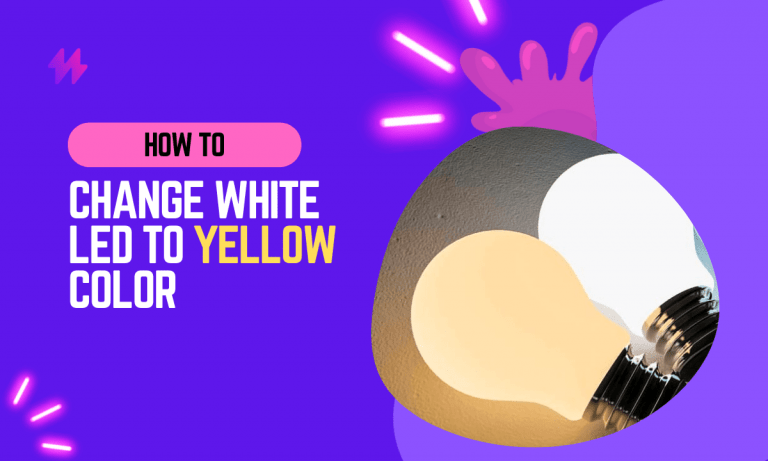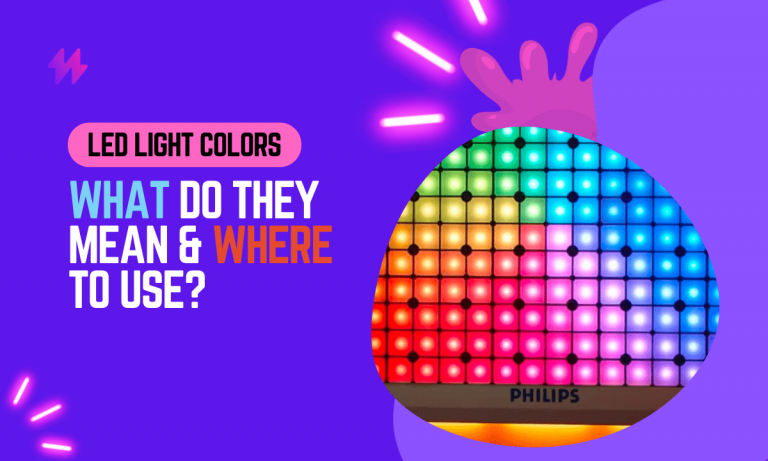Warm White vs Cool White Lighting: Which is Better?
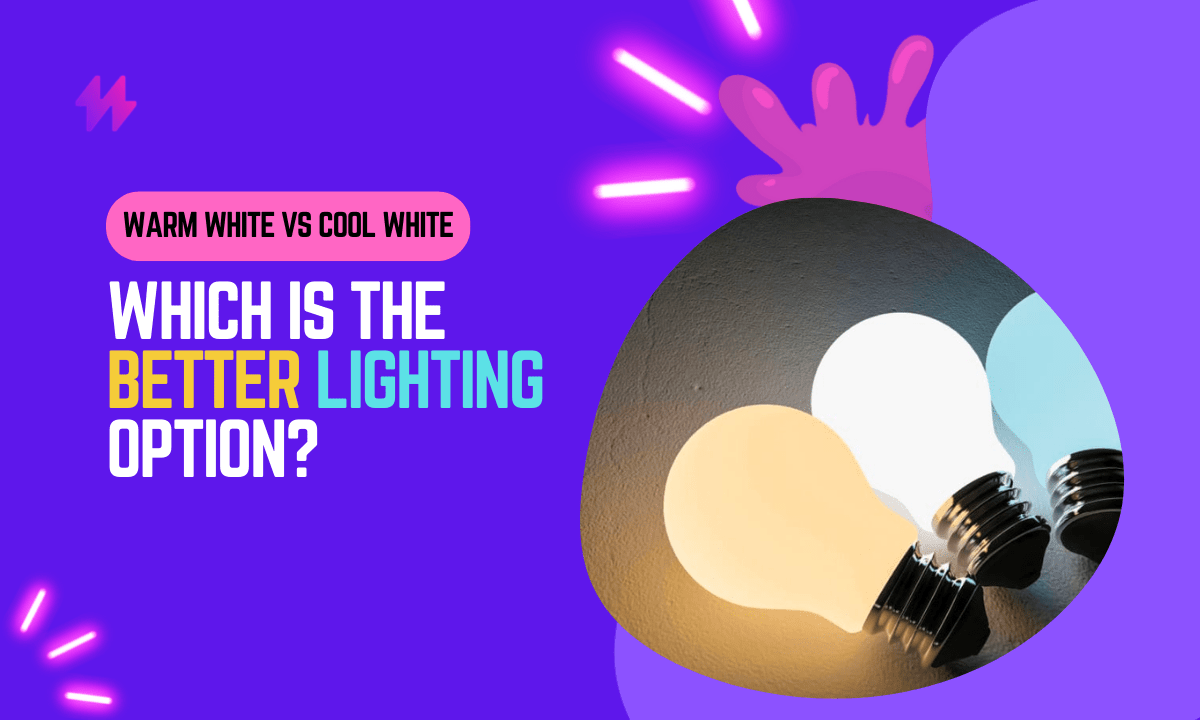
Lighting is an essential part of any interior design, and it can have a significant impact on the look and feel of a space. When it comes to choosing the right type of lighting, many people are often confused between warm white, neutral white, and cool white lighting. Both types have their unique features and benefits, and choosing the right one can make a huge difference in the ambiance of your home or office.
In this blog post, we’ll explore the differences and similarities between warm white and cool white lighting and help you determine which is better suited for your needs. So, let’s dive in and learn more about these popular lighting options!
Warm White Lighting
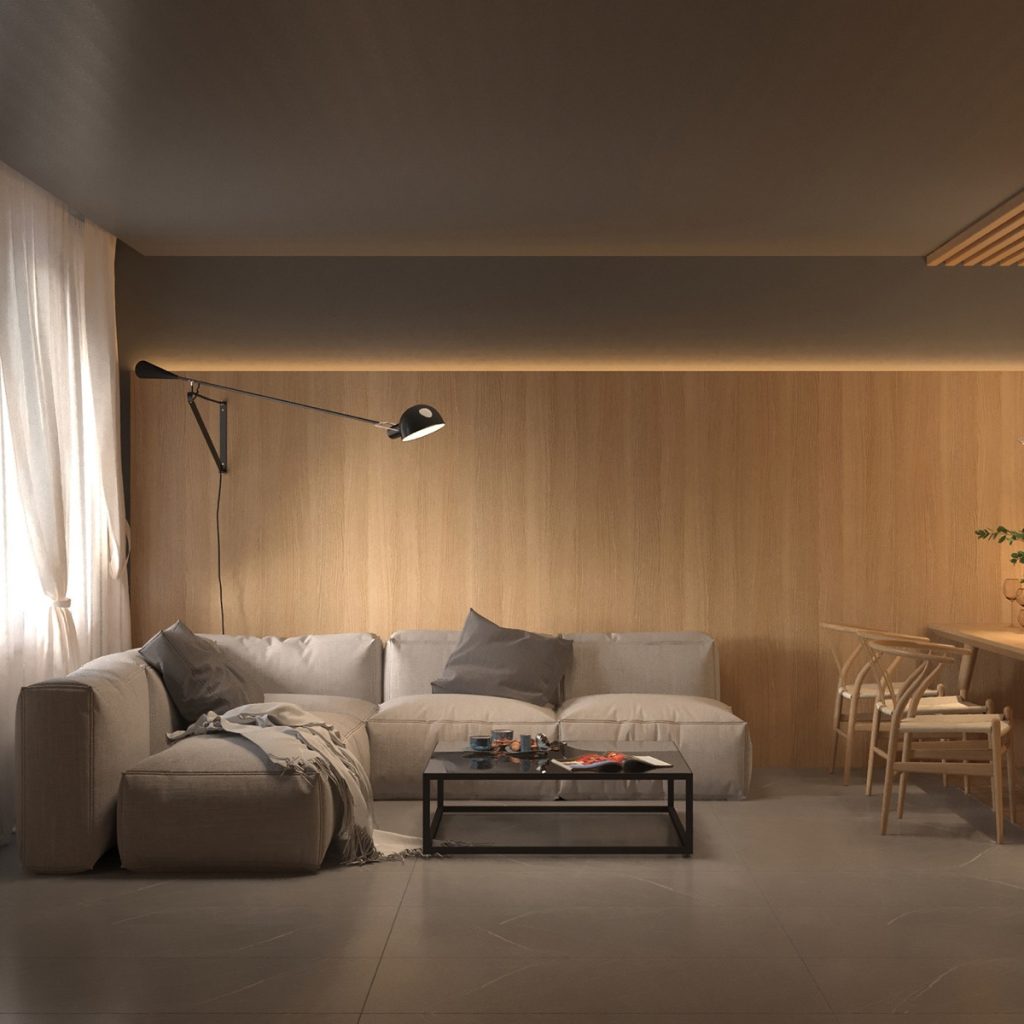
Warm white lighting typically falls within the color temperature range of 2700K to 3000K on the Kelvin scale. It emits a cozy, yellowish glow that closely resembles the warmth of traditional incandescent bulbs. This type of lighting creates a welcoming and relaxed ambiance in a space.
The Kelvin scale is used to measure the color temperature of light sources. In the case of warm white lighting, the color temperature typically ranges from 2700K to 3000K. Lower Kelvin values indicate warmer, more yellow-toned light.
Warm white lighting is commonly used in areas where a comfortable and inviting atmosphere is desired. It is well-suited for residential spaces such as living rooms, bedrooms, and dining areas. The warm glow of this lighting promotes relaxation, intimacy, and a cozy environment. Additionally, warm white lighting is often preferred in hospitality settings like restaurants and hotels, as it creates a pleasant and welcoming ambiance for guests.
Warm white lighting fixtures include chandeliers, table lamps, wall sconces, and recessed downlights. When selecting bulbs for warm white lighting, look for those with a color temperature in the range of 2700K to 3000K. LED bulbs and compact fluorescent bulbs are popular choices for achieving warm white lighting.
Cool White Lighting
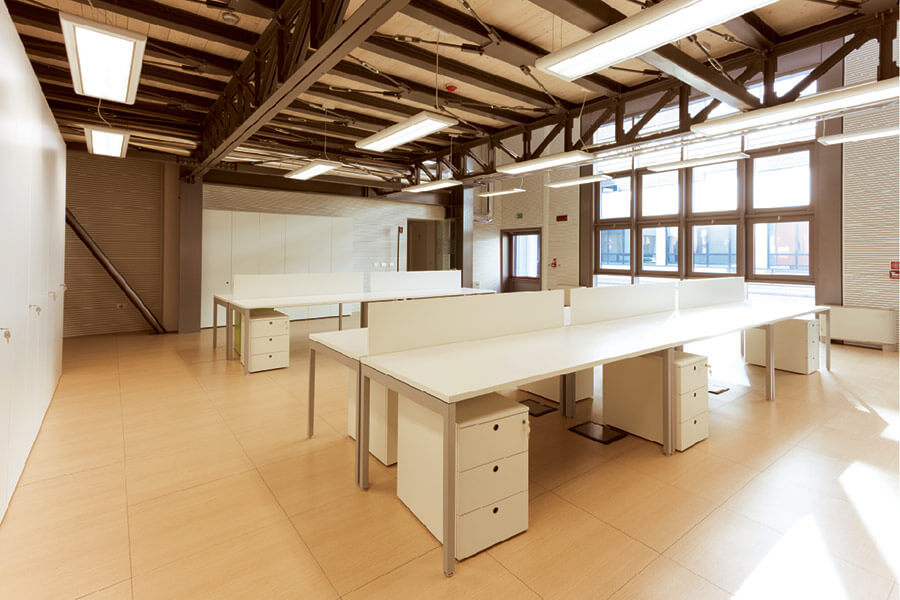
Cool white lighting falls within the color temperature range of 3500K to 4000K on the Kelvin scale. It emits a bright, bluish-white light similar to natural daylight. This type of lighting creates a more energetic and vibrant atmosphere in a space.
The color temperature of cool white lighting typically ranges from 3500K to 4000K on the Kelvin scale. Higher Kelvin values indicate cooler, bluish-toned light.
Cool white lighting is often used in areas where clarity, focus, and enhanced visibility are essential. It is commonly found in commercial and retail settings such as offices, hospitals, supermarkets, and showrooms. The bright and crisp light provided by cool white lighting helps improve concentration, alertness, and task performance. It is also suitable for outdoor lighting, as it enhances security and visibility during nighttime.
Cool white lighting fixtures include fluorescent tubes, track lighting, pendant lights, and task lights. When selecting bulbs for cool white lighting, look for those with a color temperature in the range of 3500K to 4000K. LED bulbs and fluorescent tubes are popular options for achieving cool white lighting.
Also read: Difference between Daylight and Soft White Lighting
Warm White vs Cool White: Comparison Chart
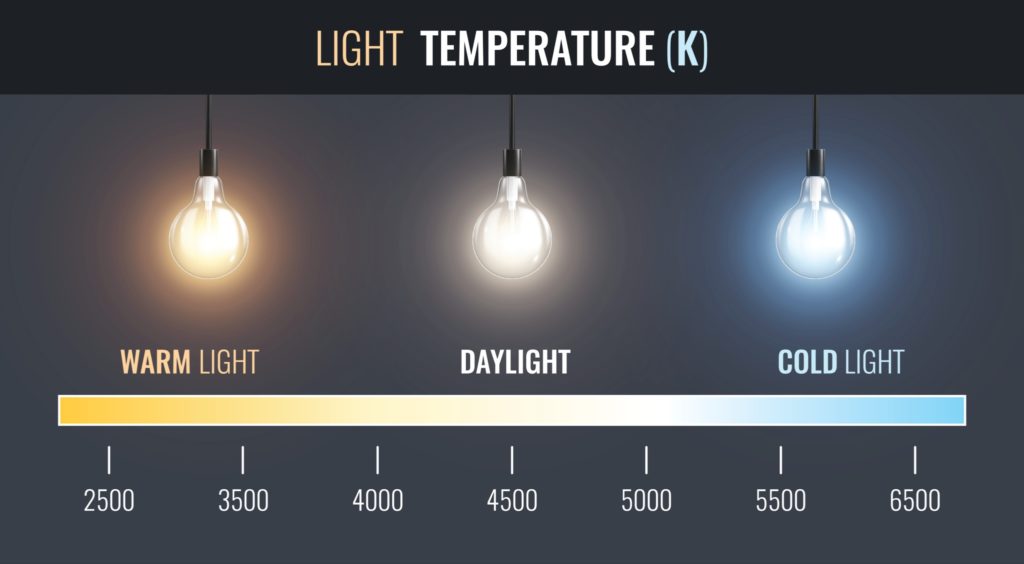
| Features | Warm White Lighting | Cool White Lighting |
| Color temperature | Between 2700K-3000K | Between 3500K-4000K |
| Hue | Yellowish or Amber | Bluish or White |
| Intensity | Softer and less bright | Bright and crisp |
| Applications | Living rooms, bedrooms, and dining rooms | Kitchens, bathrooms, and offices |
| Mood and ambiance | Cozy and relaxing | Energizing and stimulating |
| Eye strain | Less likely to cause eye strain | May cause eye strain with prolonged exposure |
| Environmental impact | Energy efficient | Energy efficient |
| Lifespan | Long lifespan | Long lifespan |
Note: The values in the table are approximate and may vary depending on the specific brand and type of light bulb.
Visual impact and ambiance
The visual impact of warm white and cool white lighting differs significantly. Warm white lighting creates a cozy and relaxed atmosphere, ideal for creating a sense of comfort and intimacy. On the other hand, cool white lighting produces a brighter and more energetic environment, promoting alertness and focus.
Psychological and Physiological Effects on Human Perception
Warm white lighting has a calming effect on the human mind and body, making it suitable for spaces where relaxation and comfort are desired. Cool white lighting, with its resemblance to natural daylight, can increase alertness, improve productivity, and provide a sense of energy. You should also consider which lighting is bad for human eyes.
Considerations for spaces and activities
The choice between warm white and cool white lighting depends on the specific space and its intended use. In residential areas, warm white lighting is often preferred for bedrooms, living rooms, and dining areas to create a cozy and inviting atmosphere. Cool white lighting is more commonly used in workspaces, kitchens, and task-oriented areas where clarity and focus are important.
Energy efficiency and cost-effectiveness
Energy efficiency is an important consideration when selecting lighting options. Both warm white and cool white lighting can be achieved with energy-efficient LED bulbs. However, it is worth noting that cool white LEDs tend to be slightly more energy-efficient than warm white LEDs.
Maintenance and lifespan of bulbs
LED bulbs, regardless of whether they emit warm white or cool white light, generally have a longer lifespan compared to traditional incandescent bulbs or fluorescent tubes. LED bulbs require less frequent replacement, reducing maintenance efforts and costs.
You may also like: Difference between Bright White vs Daylight Lighting
Factors to Consider When Choosing Between Warm White and Cool White Lighting

Personal Preferences
Personal preferences play a significant role in choosing between warm white and cool white lighting. Some individuals may prefer the cozy and intimate atmosphere created by warm white lighting, while others may lean towards the energizing and vibrant ambiance of cool white lighting. Consider your personal taste and the desired aesthetic for the space in question.
Purpose and function of the space
The purpose and function of the space heavily influence the choice of lighting. Consider whether the area is meant for relaxation, productivity, or a specific activity. Bedrooms, living rooms, and dining areas typically benefit from warm white lighting, while workspaces, kitchens, and task-oriented areas may benefit from cool white lighting.
Existing decor and color schemes
Take into account the existing decor and color schemes of the space. Warm white lighting tends to complement warm-toned and earthy color palettes, while cool white lighting pairs well with cooler and neutral color schemes. Ensure that the lighting choice harmonizes with the overall design and enhances the aesthetic appeal of the room.
Desired mood and atmosphere
The desired mood and atmosphere you want to create in the space should guide your lighting decision. Warm white lighting is often associated with relaxation, coziness, and a sense of intimacy. In contrast, cool white lighting can evoke a more energetic, refreshing, and professional ambiance.
Practical considerations
Practical considerations, such as the need for task lighting or safety requirements, should be taken into account. Task-oriented areas, such as home offices or kitchens, may benefit from the clarity and brightness of cool white lighting. Outdoor areas, such as pathways or security lighting, often require cool white lighting for improved visibility and safety.
Also read: 5 Ways to Change White LED Light to Yellow
Final Words
In conclusion, the choice between warm white and cool white lighting boils down to the specific needs and desired ambiance of a space. Warm white lighting, which typically has a color temperature of around 2700K to 3000K, emits a soft, golden hue that creates a cozy and inviting atmosphere. This type of lighting is ideal for living rooms, bedrooms, and dining areas where relaxation and comfort are priorities. The warm glow enhances earth tones and wood furniture, making it excellent for spaces designed to be tranquil and restful. Additionally, warm white lighting is often preferred in environments where a peaceful, serene setting is desired, as it naturally reduces eye strain and provides a comforting contrast to the harshness of natural daylight.
Conversely, cool white lighting, with its color temperature ranging from 4000K to 5000K, emits a more vibrant, crisp light that resembles daylight. This quality makes cool white ideal for kitchens, bathrooms, and workspaces where high visibility and concentration are required. The brighter, more energetic light of cool white bulbs enhances mental alertness and improves mood, which is beneficial for task performance and clarity. Additionally, this cooler spectrum is excellent for modern, minimalist spaces where clean lines and bright spaces are emphasized. It also works well in areas that require precise color perception, such as art studios or display areas. Ultimately, neither warm white nor cool white lighting is inherently better; instead, the best choice depends on the functional needs of the room, the activities performed within it, and the emotional effects desired by the occupants. By carefully selecting the appropriate color temperature, one can significantly enhance the functionality, style, and comfort of any given space.


